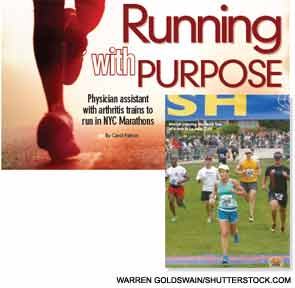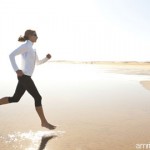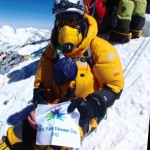
If you walk into Victoria A. Merrell’s beach bungalow, you may see one or two trophies sitting on the dresser, a mountain bike that’s covered with layers of dirt on her backyard patio, and a surfboard standing in the corner of the garage.
Merrell, PA-C, MPT, has been active in sports for as long as she can remember.
Soccer. Swimming. Cycling. Surfing. Mountain biking. Running. She enjoys them all, especially the last. While in her thirties, Merrell, who works for Roy Kaplan, MD, a rheumatologist in private practice in Encinitas, Calif., won her first triathlon in Monterey, Calif., and a second in Palo Alto, Calif., that involved a one-mile swim, 25-mile bike ride and a 10k (or six-mile) run.
But in the 1990s, she developed arthritis and was forced to place her athletic ambitions on hold for more than a decade. Under the care of a rheumatologist, Frank Dega, MD, she learned how to manage her disease, refusing to let it dictate her lifestyle. Four years ago, when the disease was under control, she started running again and hasn’t stopped. Today, at almost 50 years of age, she is currently training for the ING New York City marathon that will be held on Sunday, November 3, and raising money for the Arthritis Foundation.
“For me, running is kind of a meditation,” she says. “It’s a time I can think freely and decompress from the day.”
Uphill Battle
After moving from Idaho to California in the early 1990s, she started doing “easy beach runs,” then low-mileage runs, and slowly incorporated running and cross-training activities into a daily routine that was similar to her previous workouts before illness struck.
Merrell’s day typically begins at five o’clock in the morning. On weekdays, she runs six to eight miles. On weekends, she does her longer runs. When her legs are tired, she may swim, attend a spin class, go mountain biking, or even surf, just for fun.
Running every day can do more harm than good. “You end up overtraining,” she explains, “and it really sets you up for injury.”
Listen to more of our interview with Victoria Merrell.
Although she has had her fair share of common injuries, such as a stress fracture and plantar fasciitis, she has rarely missed a workout, which is based on a seven-minute, 35-second half-marathon pace. She adds variety to her training by changing the location of her runs and incorporating speed workouts, which involve intervals, like running up a hill 10 times or running 800 meters 10 times, each time at the same speed.

